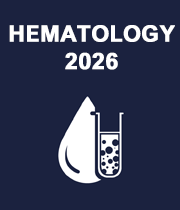Nuclear Hematology
Nuclear haematology is the study of the pathophysiology, diagnosis, and treatment of haematological conditions using radionuclides or radiopharmaceutical substances. Radionuclides are currently commonly employed to label produced blood elements (random labels) in order to track their biological distribution, function, and lifespan in vivo, as well as to examine the proliferation and differentiation of hematopoietic progenitor and precursor cells in the bone marrow (cohort labels). The assessment of spleen size, splenic sequestration of blood cells, and investigations into the absorption, metabolism, and use of haematological nutrients such as iron, vitamin B12, and folate are some of the other primary applications of nuclear haematology. Many imaging techniques are progressively being used and studied to establish the anatomical distribution of hematopoietic tissues in the bone marrow and other organs, as well as to assess their importance in the diagnosis and therapy of various haematological illnesses.



Title : Acute intermittent porphyria: A neurological dilemma obscured by ubiquitous fgastrointestinal presentation
Mayank Anand Singh, Mimer Medical College, India
Title : Comprehensive symptom management and supportive nursing care in a preterm toddler undergoing HSCT for pyruvate kinase deficiency
Tran Thi Dung, Vinmec International Hospital, Vietnam